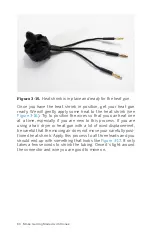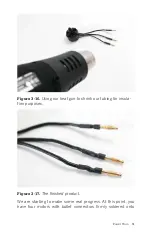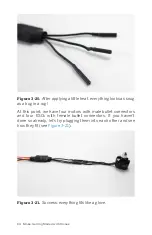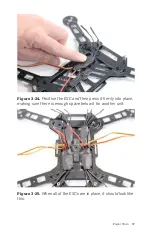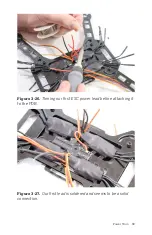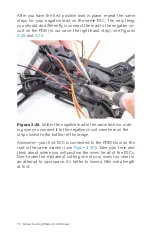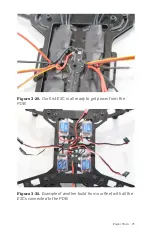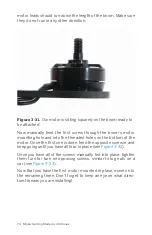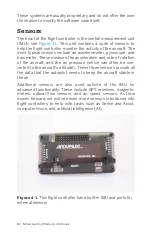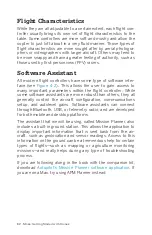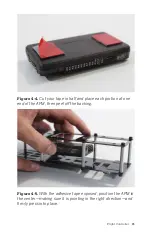
Pay Attention to the Thread Direction!
Notice that your motors have a shaft that holds the
prop in place. This shaft is threaded, and a nut of
some type (called the
prop nut
) fits over that thread
and puts pressure on the prop. In the early days of
small drones, those threads were all standard clock-
wise threads. Because our motors spin in both
clockwise and counterclockwise directions, manu-
facturers realized that if they created motors with
standard and reverse threads, they could use the
spinning prop direction to help keep it tight. Make
sure that you always have a thread that screws on in
the opposite direction from that in which the prop
will be spinning.
Clockwise spinning motors should have a reverse-
threaded shaft. Counterclockwise motors work best
with a standard thread.
One catch: not all manufacturers make their motors
this way. Many still only use a standard thread on all
of their motors. This will still work fine; just be sure
to tighten it well and check it regularly (as you
should anyway).
The moral to the story is to always know what type
of threads your motor shaft has and be sure you are
installing them in the right location. If you need to
confirm the direction that your motor will be spin-
ning, do so before attaching it to the frame.
For our Little Dipper build, our motors will spin
clockwise on the NE and SW motors while the NW
and SE motors spin counterclockwise.
Start your mounting process by laying the motor flat on the top
of the boom while lining up the mounting holes in the bottom of
the boom with the threaded holes in the bottom of your motor
(see
). Make sure that you have a motor with the cor-
rect thread direction for the anticipated motor direction. The
Power Train 73
Summary of Contents for Belinda Kilby
Page 1: ......
Page 3: ...Make Getting Started with Drones Terry Kilby and Belinda Kilby...
Page 26: ......
Page 90: ......
Page 126: ......
Page 153: ...Figure 9 10 Compass setup Figure 9 11 Compass calibration ArduPilot Mega APM Setup 141...
Page 198: ......


